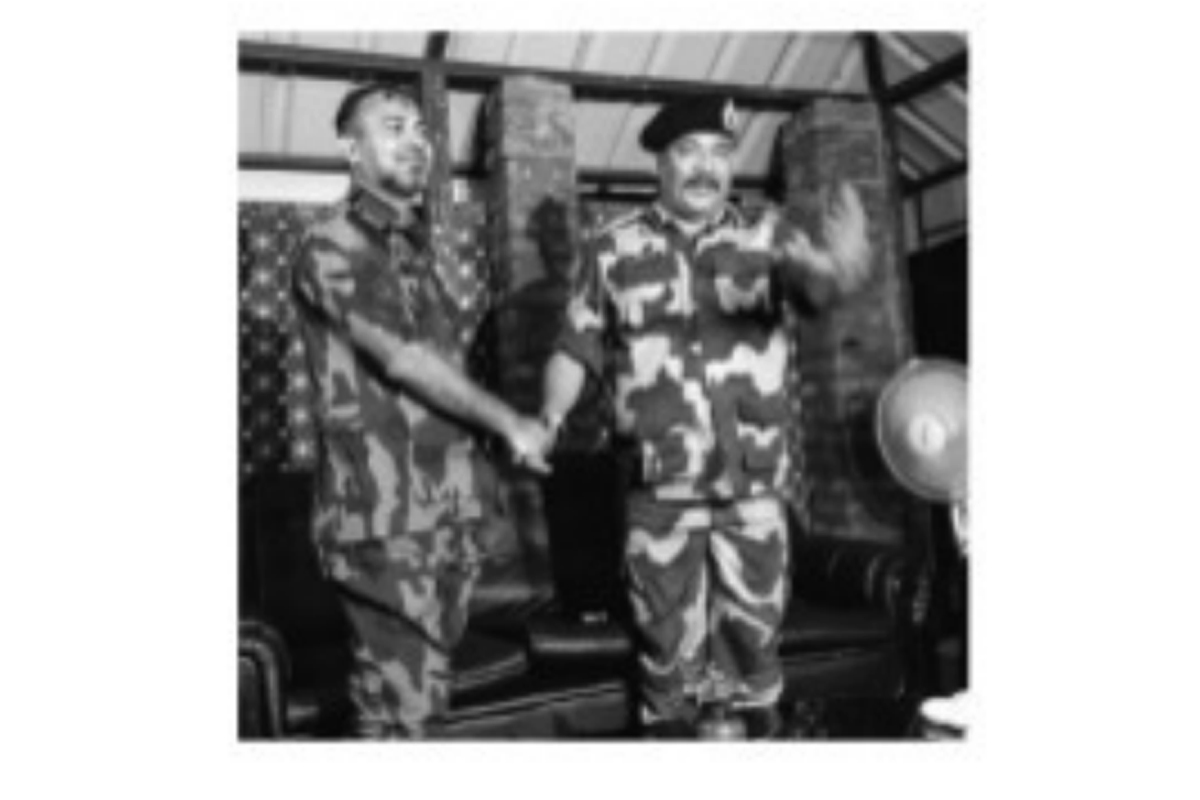A vote for BJP will ensure Tripura’s prosperity: PM to Agartala electorate
Modi claimed that the North East policy of the Congress and the Communists was a Loot East policy, which the BJP buried 10 years back and initiated an Act East Policy.
According to the Border Guard of Bangladesh (BGB), there are many vulnerable zones for smuggling on both the Indian and Bangladesh sides.

Photo: SNS
Though people of Dahagram, an enclave in the Indian part, are happy with Indian government for setting up the Tin Bigha Corridor, they demand one more thing from Prime Minister Narendra Modi.
Talking to a team of Indian journalists who were on a visit to the place, a group of Dahagram residents said in unison that they now wanted permission to take cattle to local markets for sale.
We are happy with the Indian government’s policy to facilitate us by providing a plot of the Tin Bigha land, for a corridor which connects Dahagram and Angarpota with mainland Bangladesh. Now we live and stay well in our land peaceful,” they said. “However, we are facing problems ferrying cattle from our villages of Dahagram and Angarpota to local haats (weekly markets). We depend on agriculture and cattle rearing, but the Border Security Force (BSF) allows only 30 heads of cattle via this corridor. We wish to appeal to the Indian Prime Minister to increase the number from 30, so that we can ferry more cattle to the markets,” they added.
Advertisement
One of them also pointed out that the corridor was narrow and that the road there should be widened. Speaking to a Bangladeshi journalist on the issue of smuggling and border killings, an enclave resident, said: “Border guards of both India and Bangladesh can jointly take action to prevent smugglers from illegal cattle trade, but the common people, who deal in cattle business, should not be treated as criminals.”
A teacher of a college in Bangladesh, Mafizur Rahaman, who explained about medical problems enclave dwellers had been facing before the execution of the Tin Bigha Corridor, said: “Enclave dwellers are gradually improving their living standards following social and economical development in Dahagram and Angarpota after introduction of the Corridor.”
Notably, a 14-member delegation of the Indian Media left for North West Bangladesh on a four-day visit via the Fulbari-Banglabandha Immigration Check Post on 14 July. The team reached Rangpur and then left for Tin Bigha Corridor amid incessant downpour. During the journey from Rangpur to Tin Bigha via the Teesta Barrage in Nilfamari district, the team of the Indian media noticed huge green paddy fields on either sides of the road, while many fields were under flood waters. Teesta River was also swollen, while villagers, from children to the elderly, caught fish with the help of nets in several villages. Many of them are poverty-stricken, and it is said that men in the families are involved in smuggling to earn their livelihood.
According to the Border Guard of Bangladesh (BGB), there are many vulnerable zones for smuggling on both the Indian and Bangladesh sides. The BGB has also identified item-wise smuggling prone zones along the border. Rajshahi, Chapai Nawabganj, Kurigram, Patgram and Burimari on the Bangladesh part are located near North Bengal–from Malda to Cooch Behar. On the other hand, the border areas including Fulbari, Joypurhat , Naogaon, Potnitola and Lalmonirhat are prone to smuggling of Phensedyl, Yaba, Heroin, Hasish, injections and other narcotics.
BGB officials also claimed that Rajshahi and Chapai Nawabganj are vulnerable to smuggling of arms and ammunition from India to Bangladesh. According to the BGB, several items, including electronic goods, polyester clothes, hilsa fish, jute, garments, leather, kerosene, contraceptive pills and touchstone statues are being smuggled to India from Bangladesh.
Advertisement